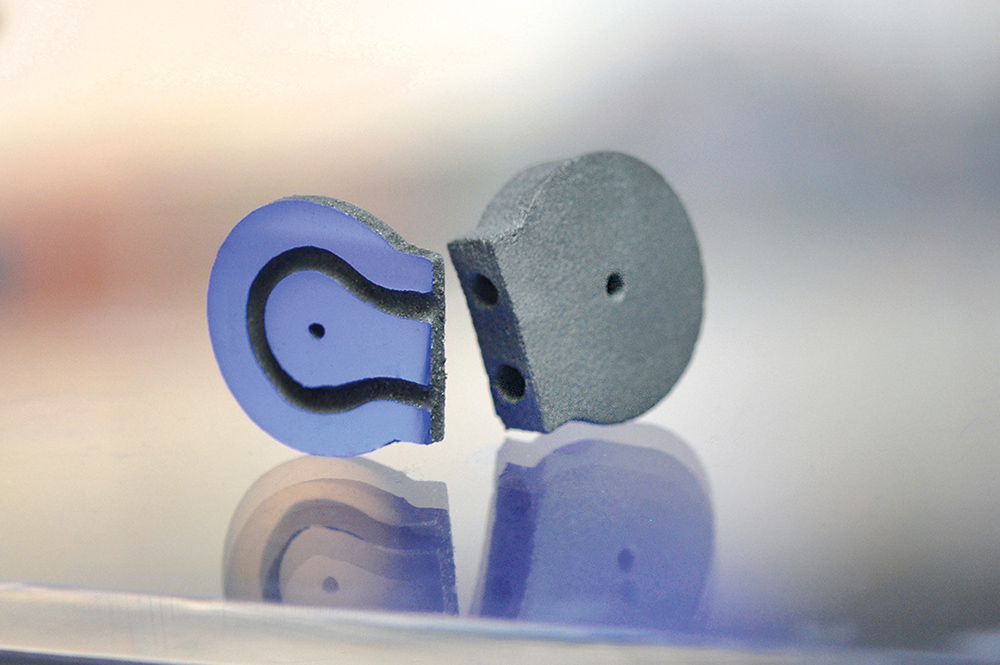Quick introduction: Mining and Offshore
Hard metals are high-performance materials which are characterized above all by its high hardness and wear resistance combined with good toughness. The complexity of hard metal components is currently limited by conventional forming processes. Only comparatively simple geometries can be realized. However, modern tools often require much more complex geometries, such as helical or meandering cooling channels in the interior of the component, which are produced elaborately and cost-intensively by machining and grinding hard metal blanks with diamond tools or by eroding. Therefore, the researchers at Fraunhofer IKTS are developing complex hard metal tools using 3D printing processes, the quality of which is not inferior to conventionally produced high-performance tools.
In the binder jetting process used, the starting powders or granules are locally wetted and bound with an organic binder via a printing head. During heat treatment, which must be specially adapted to the composition, the organic binder is driven out in a first step and then the component is compacted at high temperature and pressure. By optimizing the process chain, it has been possible to obtain 100 % dense components with a perfect hart metal structure and good mechanical properties. Through the targeted variation of the binder matrix, bending strength, toughness and hardness are individually adjusted – the lower the binder content in the hard metal, the harder the component. The prototypes manufactured at Fraunhofer IKTS have a binder content of 12 and 17 mass percent, respectively, and show a structure comparable to that of conventional production routes.
